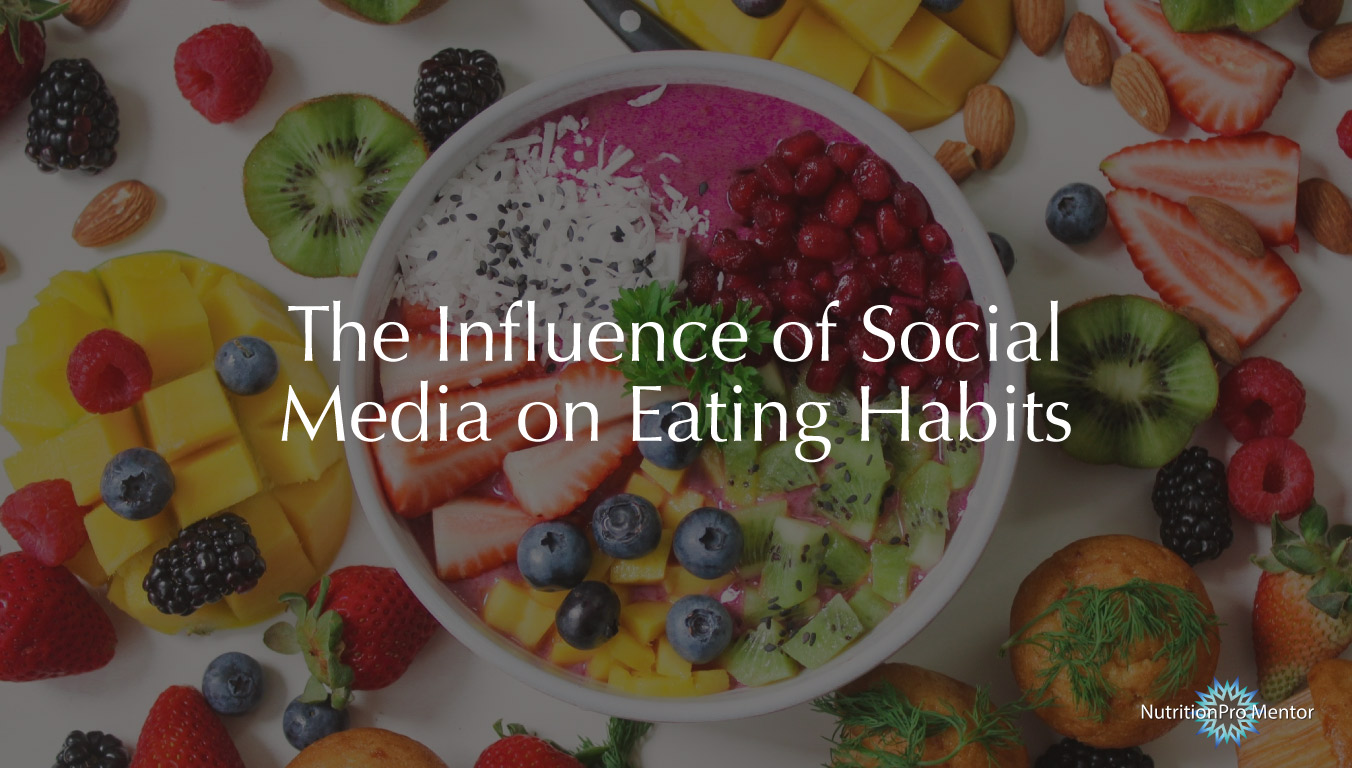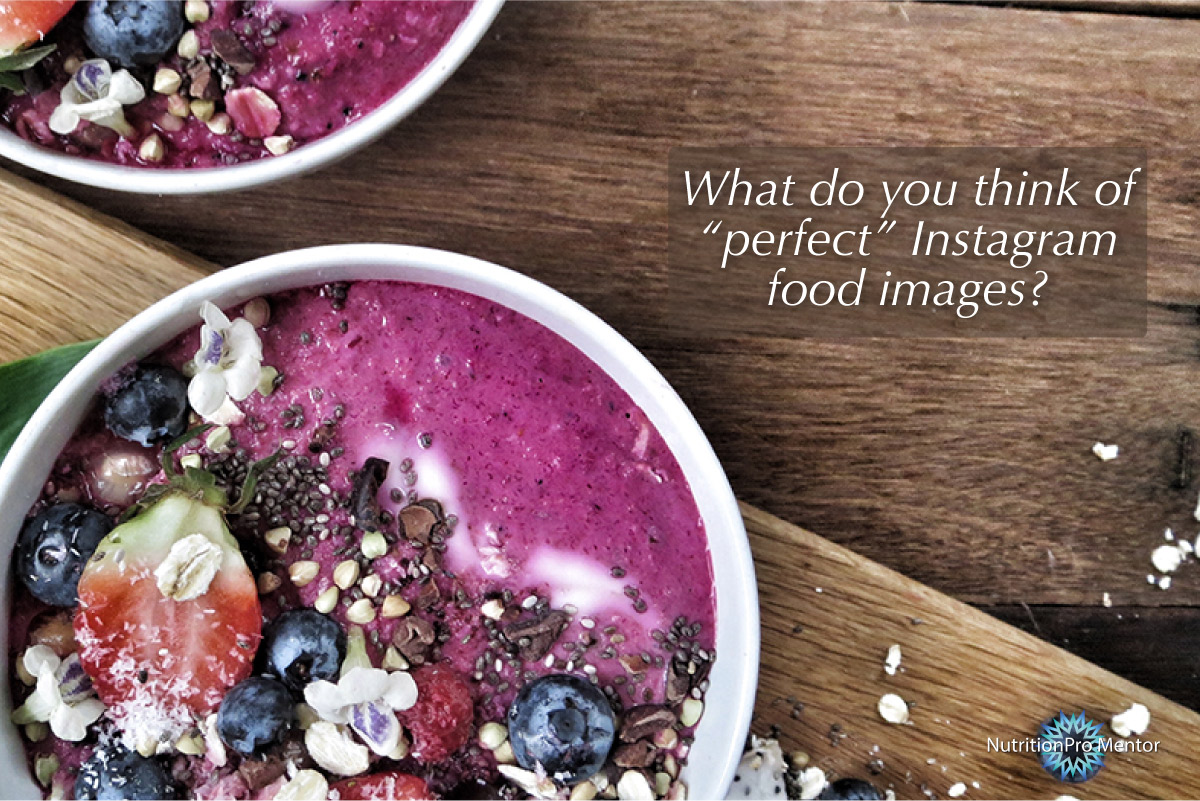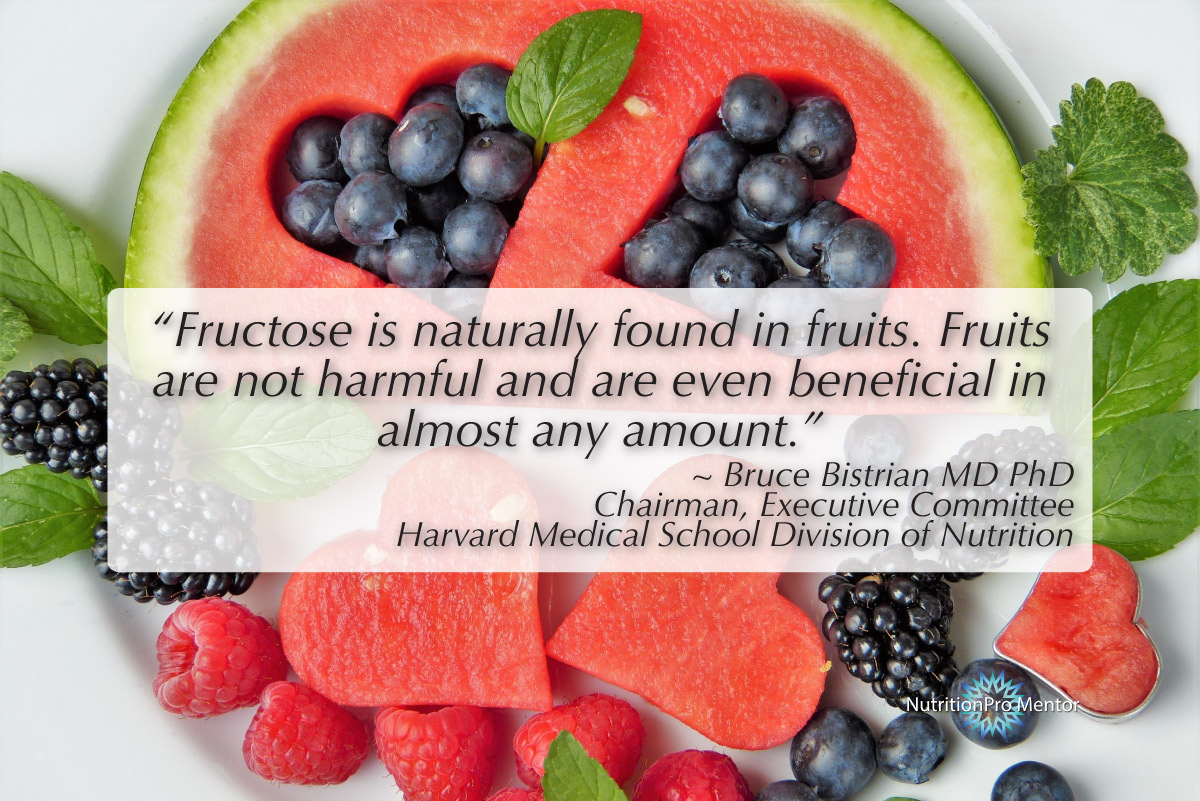When I attended a symposium called Ambition Nutrition, on Wednesday, May 16, 2018, the third presenter of the day, registered dietitian Nishta Saxena, spoke about Nutrition IRL (in real life) — Food and Nutrition in Social Media. This presentation inspired me to dig a little deeper into the world of social media and its influence on people’s view and interpretation of what healthy eating is, and if this is helping or hindering trying it in real life.
In this blog, I address some of the controversies surrounding the potential influence of social media on food beliefs and eating behaviour, specifically as it relates to sharing of food and nutrition information and images. I touch on a couple of the misconceptions that keep getting propagated, by consumers AND some healthcare practitioners alike, although there is scientific evidence to the contrary.
Let’s start by acknowledging that there was a valid concern raised during the presentation I attended: that the general public, or consumers, get their information primarily through the Internet now, where everyone seems to have a say, and a deep knowledge, level of education or credentials don’t seem to matter.
And one of the main sources of information in the Internet world is social media.
Compounding this issue is that 75% of people don’t even check to see where the information came from, or when the information was posted. They don’t check the source or the date!
The positive is that people are interested in learning more about how to feed themselves healthy, nourishing food, as evidence by the main areas people search for:
- Information on healthy food preparation
- How to choose ingredients
- Specific information about healthy foods
You would think that is great news. However, there is a bit of a disconnect… Even though there is a great amount of “research” being done — Global usage of social media has increased from 90 min average per person per day in 2012, to 135 min pp/d in 2017 — Canadians spend, on average, less than 30 minutes on food preparation daily. So people are searching for information on how to eat healthier, yet they seemingly are not executing what they’ve learned.
WHAT’S THE POTENTIAL ISSUE WITH THE “PERFECT” FOOD PICTURES?
Social media has an impact on how people think about food in general, with Instagram being one of the most popular sources of inspiration for those who are into food and/or are health conscious.
But is this influence a good or a bad thing?
And does #instafood always taste good?
In preparation for this blog, I asked NutritionPro Mentor members to share what they thought of the seemingly perfect food images posted on Instagram, of which the ever-present smoothie bowl, with various elegantly placed toppings, is the worst offender.
Luana commented: They can be harmful if ingredients are given that are expensive and the majority do not buy.
Ricki added: I’m a nutritionist and I probably eat or have eaten all those “special” ingredients, and it still drives me crazy to see all the perfection on instagram food! Someone I know calls them the “shiny happy people”–because they present their food as 100% organic, superfoods, gorgeous, everything with added maca and chaga mushrooms and “elixirs” instead of drinks. . . . I could see how it would be very intimidating to anyone who didn’t eat that way. I got so fed up at one point that I posted this on instagram LOL!!
Vanessa posted: I think ideal, overly beautiful staged photos … can be intimidating or seem unrealistic. I think the real, authentic, work in progress can be really effective and motivating. Life is generally slightly messy (at best!) and so why not be real about it and put it to use.
Thera added: It really doesn’t bother me what other people’s food looks like. I don’t get caught up with perfection.
Caryl had the final say: If you love to cook, it will inspire you. If you hate to cook, you likely won’t bother. I am finding a thread in my clients – they don’t cook and this would turn them off. However for me, it might motivate me.
I think Caryl hit the nail on the head with that last comment. Most people actually do not know how to cook because they have not been taught how to and now it seems intimidating and overly difficult to start learning now.
There is evidence to strongly suggest that the more you look at food that is perfectly curated for images, the less likely you are to prepare food.
In other words, making the food images look too perfect discourages people from actually preparing that food.
That’s the opposite of what we’ve been led to believe, because some of us want to post pictures of yummy food to entice potential customers to engage with us and build our businesses as a result.
And… all those courses and tutorials out there on how to take the “perfect” picture of the food you’ve prepared… Don’t worry about those.
The verdict is in… no need to “stage” the food. Show how your kitchen REALLY looks when you are preparing the food. Show the resulting dish in all its messy, delicious glory.
Now you still want to make sure your picture is of good quality, with high resolution — by that I mean in focus, not blurry, and well lit so it’s not too dark to make out what’s in the image. Other than that, just be yourself, and describe how delicious the dish turned out to be. Also helpful are the ingredients and directions for your dish in your description of the image, or at least where people can go to get the recipe and directions.
This will be more helpful, and you will be more relatable.
Food does not need to look perfect to be delicious.
There is another issue with constant exposure to delicious-looking food, though it seems harmless. A review of studies in Brain and Cognition suggests that regular exposure to virtual foods, along with the array of neural, physiological, and behavioural responses linked to it, can exacerbate our physiological hunger too frequently. This can encourage eating even if you’re not actually hungry, potentially leading to weight gain.
It doesn’t help that seeing images of food can physically affect you, making you salivate, messing with insulin levels, and even shaking up your heart rate — all in anticipation of eating the food you see.
LET’S TALK ABOUT THE SMOOTHIE BOWL, AND FRUIT, IN PARTICULAR
Some people, and even some nutrition professionals, have the misconception that fruit should be avoided or limited because of its sugar content — because of its fructose content — putting it in the same category as refined sugar, high-fructose corn syrup and other added, isolated sugars.
This REALLY bugs me, because it’s NOT TRUE.
The sugar in fruit is part of a matrix along with fibre and phytonutrients — you know — polyphenols, bioflavonoids, and so on, depending on the fruit.
There were at least two studies that I’m aware of that looked at fruit intake up to 20 servings a day (the equivalent of 200 g fructose or 8 cans of pop) — one of these very recently, out of our very own University of Toronto, from Dr. David Jenkins’ team — showing NO DETRIMENTAL effects of consuming so much fructose in its natural form, from fruit, IN THE FRUIT. In fact, quite the opposite, they were even able to show a significant 38-point drop in LDL cholesterol after only 2 weeks!
There was also a study done comparing 2 energy-restricted diets — a low-fructose diet and a moderate natural fructose diet — and people actually lost MORE weight on the diet WITH fruit than without.
There were also some studies done to find out if it is the fibre that is helpful for blood sugar control and the other benefits of fruit, or if it’s something else. When fruit puree was compared with the juice (added to a sugar solution), both had the beneficial effects on blood sugar. So it’s not just the fibre. There are plant nutrients in fruits — polyphenols — that contribute to the healthful effect.
Now you may be wondering if this even applies to type 2 diabetics, as some health professionals recommend they restrict their fruit intake. There was a study done where diabetics were randomized into 2 groups: one group was instructed to eat at least 2 servings of fruit a day, and the other group was instructed to eat no more than 2 servings fruits a day. The result was that there was no effect on diabetes or weight control, prompting the researchers to state that the intake of fruit should not be restricted in patients with type 2 diabetes.
So… no need to fear fruit. No need to shy away from smoothie bowls or even from freshly pressed fruit juices!!!
No more fearing fruit!
CONCERNS ABOUT “UNNECESSARY” AND “TRENDY” DETOXES AND CLEANSES
Health care professionals often take issue with what they refer to as “trendy” and unnecessary detoxes and cleanses. Some of this overreaction relates to juicing, which is thought to wreak havoc on our systems causing high blood sugar, dizziness, and muscle weakness — something I just finished clarifying a moment ago.
There is also the often stated party line that “Our bodies are equipped with all the detoxifying equipment they need: liver and kidneys and a drive for homeostasis. No special diets or supplements needed.”
Well — Yes, we have detoxification organs. And yes, our bodies are designed to be able to detox normally and naturally on their own.
However, detoxing and cleansing protocols are not necessarily unnecessary.
Let me clarify …
The purpose of detoxing and cleansing protocols is to help our bodies in those efforts. To facilitate those actions. By avoiding the things that add toxins, and adding in plenty of foods that support detoxification functions. Sometimes also adding in herbs and other supplements that help out in those regards.
It is fair to raise a red flag about this, however, because there are different ways to go about supporting the body in its detoxing and cleansing functions, not all protocols are right for all people, and that some protocols can do more harm than good.
It is important to meet the person where they are at. Any improvement in diet, for example, will help someone detox. However, if changes are too drastic and extreme — think someone who is eating a Standard American Diet trying to do a Master Cleanse for 10 days — that can lead to worsening health and even potentially precipitating a disease. If the release of toxins from storage in the body overwhelm the detoxification channels, then the toxins will recirculate in the body and potentially cause harm.
So when people see images or posts about this and that detox or cleanse, and they try it on themselves without the guidance of someone who is well educated in this area (like holistic nutrition professionals), there is a real potential for harm.
It is a real issue.
OTHER CONCERNS
Social media is also full of posts that promote unhealthy eating habits. These are referred to as #foodporn. And these are mostly coming from brands and consumers.
Research published in the journal Brain and Cognition provides evidence that merely looking at “food porn” can lead to weight gain.
Specifically, the researchers questioned the impact our increasing exposure to images of desirable foods via digital interfaces might be having. They asked the question, might these not inadvertently be exacerbating our desire for food, or our “visual hunger”?
They found that there is a large body of cognitive neuroscience research demonstrating the profound effect that viewing such images can have on neural activity, physiological and psychological responses, and visual attention, especially in the “hungry” brain.
Studies show that what happens after seeing “food porn” photos is harmful. When people look at these pictures, usually of food that is not necessarily healthy and high in calories, their bodies release hormones that tell them to eat. These hormones can even make people’s hearts race, insulin levels spike and mouth water. This explains why Instagram users are then very likely to desire and then look for the unhealthy food they just saw.
There are also posts about very restrictive diets, which may or may not be appropriate or necessary for a specific individual.
There are some posts encouraging intermittent fasting that can be taken to extreme and be dangerous for some people to undertake without the supervision of a healthcare professional.
There are posts about ketogenic dishes and snacks that, without the proper context, can cause the consumer to have the opposite of the intended effect, which typically is weight loss. And by context I mean how much to eat, as part of which dietary protocol, undertaken for how long… and so on. No matter how healthful the ingredients of the recipe are.
You get the idea.
There are definitely other potential pitfalls to address, but we’d be here all day.
THE POSITIVE SIDE OF SOCIAL MEDIA
But wait! There is also a positive side to social media.
Overall, social media CAN be a good source of inspiration for healthy eating. Even though there are some extremes, there are also posts with accurate and helpful information, recipes included with the food images (or where to find it), as well as posts encouraging us to have a healthy relationship with food and tune in to our bodies and listen to our satiety signals.
SUMMARY
Overall, social media should be considered a very powerful tool that should be treated with respect. As with all tools, how it is used will determine whether or not it is helpful or harmful. It can be a major source of education and inspiration, but it can also be a source of false or misleading or out-dated information.
We should all be asking ourselves, “What I am posting? Is it useful? Am I making a positive impact on someone today or am I spreading negativity?”
To be part of the solution and not the problem, keep your images and posts real, share accurate and helpful information, especially recipes and food preparation tips.
As holistic nutrition professionals, we have a responsibility to be helpful with our social media posts.
Emphasis on the helpful part.
Also please help dispel the misconceptions out there. Give context if you are sharing recipes or images of dishes that are part of a specific dietary philosophy, like the ketogenic diet. Be clear about how or when or for whom this might be for and not for.
Above all, be yourself, and post responsibly!
by Andrea Sevsek, Director of NutritionPro Mentor.
http://www.simplyvibrantnutrition.com/
B J Meyer, E J de Bruin, D G Du Plessis, M van der Merwe, A C Meyer. Some biochemical effects of a mainly fruit diet in man. S Afr Med J. 1971 Mar 6;45(10):253-61.
D J Jenkins, C W Kendall, D G Popovich, E Vidgen, C C Mehling, V Vuksan, T P Ransom, A V Rao, R Rosenberg-Zand, N Tariq, P Corey, P J Jones, M Raeini, J A Story, E J Furumoto, D R Illingworth, A S Pappu, P W Connelly. Effect of a very-high-fiber vegetable, fruit, and nut diet on serum lipids and colonic function. Metabolism. 2001 Apr;50(4):494-503.
M Madero, J C Arriaga, D Jalal, C Rivard, K McFann, O Perez-Mendez, A Vasquez, A Ruiz, M A Lanaspa, C R Jimenez, R J Johnson, L G Lozada. The effect of two energy-restricted diets, a low-fructose diet versus a moderate natural fructose diet, on weight loss and metabolic syndrome parameters: a randomized controlled trial. Metabolism. 2011 Nov;60(11):1551-9.
R Torronen, M Kolehmainen, E Sarkkinen, H Mykkanen, L Niskanen. Postprandial glucose, insulin, and free fatty acid responses to sucrose consumed with blackcurrants and lingonberries in healthy women. Am J Clin Nutr. 2012 Sep;96(3):527-33.
A S Christensen, L Viggers, K Hasselström, S Gregersen. Effect of fruit restriction on glycemic control in patients with type 2 diabetes–a randomized trial. Nutr J. 2013 Mar 5;12:29.
C Spence, K Okajima, A D Cheok, O Petit, C Michel. Eating with our eyes: From visual hunger to digital satiation. Brain and Cognition 2016;110:53-63.
https://www.shape.com/healthy-eating/meal-ideas/instagram-food-trends-ruining-diet
http://www.smudailycampus.com/ae/instagram-food-porn-has-negative-effects-on-health-eating-habits





